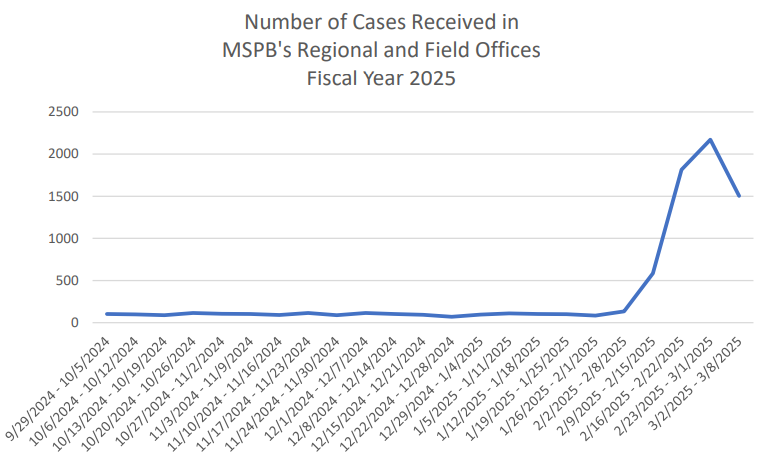The Defense Department has issued a formal notice to the contractor on its multibillion dollar household goods moving contract using a compliance mechanism that’s typically reserved for situations in which the government has strong indications that a vendor is not performing according to the terms of the contract.
The recent “show-cause” notice from U.S. Transportation Command asks the vendor, HomeSafe Alliance, to explain hundreds of instances over the past month in which movers have failed to begin military families’ moves on the agreed-upon dates, delivered their belongings late, or both, according to the command.
“It was predominantly related to those missed pickups, and those are driven by their ability to access [moving industry] capacity,” Ken Brennan, TRANSCOM’s director of acquisition, told reporters Thursday. “The going-in position was that they had to have the ability to make the moves as we farm them to them, and when they did not deliver, we asked them, ‘Where is that capacity? How are you getting that capacity?’ That is an ongoing conversation … we are talking daily to ensure that they’re building that capacity.”
GHC ramp-up
The problems appear to have begun in late December, when TRANSCOM finally began transitioning large volumes of military moves onto the long-delayed Global Household Goods contract. At the beginning of December, after an extended period of testing and phase-in activities, only about 5% of moves were happening under the GHC contract. By this week, that figure had risen to 17%, and apparently occurred at a rate that outstripped HomeSafe’s ability to recruit moving company subcontractors to perform the work.
HomeSafe declined to make any of its officials available for an interview, but in responses to written questions, said the “vast majority” of the moves it has performed so far have been successful, and that it has apologized to military families in instances where they were not.
“Modernizing the military move system has brought inevitable challenges, but HomeSafe is working through them diligently to ensure we deliver high-quality, timely moves to military service members and their families,” the company said. “We are committed to continual transparency with service members, our supply chain, and the government workforce at the DoD’s Joint Personal Property Shipping Offices as we modernize and transform the military move experience.”
HomeSafe said the recent problems were caused, in part, by an “internal logistics error” within a moving company that works as one of its subcontractors, but did not provide any further details. The company did not respond to specific questions about what percentage of its moves had gone awry.
TRANSCOM officials said they currently estimate 1,000 families have been affected by missed pickups, late deliveries, or communication problems. Those figures are corroborated by emails obtained by Federal News Network in which HomeSafe reached out to a broad swath of the moving industry to try to secure capacity for moves that were quickly approaching — or were already overdue — but for which no drivers were currently assigned. Those documents appear to show that hundreds of moves that were scheduled during periods in January had their pickups missed.
Overall, according TRANSCOM, HomeSafe has been assigned a total of 5,195 task orders for moves as of this week, 1,737 of which have been picked up and 922 of which have been delivered thus far. Many of the remaining task orders are for moving dates in the future, extending as far as the upcoming summer.
GHC still ‘the future’ for DoD, officials say
Despite the show-cause notice and recent performance issues, government officials showed no signs on Monday of backing away from their relationship with HomeSafe, which won the up-to-$17.9 billion GHC contract after a prolonged series of bid protests.
“GHC is here,” said Andy Dawson, the director of TRANSCOM’s Defense Personal Property Management Office. “GHC is the department’s future household goods relocation program, and despite some of the early challenges we’ve seen, we see many positive aspects in GHC, and we truly believe this will improve our service member relocation experience. GHC is truly a transformational effort. We are transforming the department’s internal business processes and the service member experience. We’re deploying multiple new IT software platforms, and we’re driving change in how industry supports service member shipments.”
However, HomeSafe’s current struggles in securing enough trucking and labor capacity to meet the demands of the new contract are completely unsurprising to many of the companies who currently conduct moves under the existing system, known as the “tender-for-service” program.
Capacity issues foreseen
Executives from throughout the industry have been cautioning for at least a year that the rates HomeSafe is offering to individual moving subcontractors are so low that, in many cases, companies would fail to turn a profit or even lose money on certain moves. Those rates vary significantly based on a shipment’s origin, destination and weight, but industry members have said they are as much as 40% lower than the rates DoD currently pays movers.
“This is not an over-exaggeration — this is not the boy who cried wolf anymore. The wolf is actually here, and this is heading towards an absolute catastrophic service failure,” said one industry executive who spoke to Federal News Network on the condition of anonymity because of the sensitivity of DoD’s current relationships with the industry. “I just hope that the leaders at DoD are able to stop this, because it’s about to get real. It already is, but it’s about to get a lot worse.”
HomeSafe, in turn, blamed the incumbent moving companies for some of its capacity issues.
“We’ve faced headwinds from those in the moving industry who oppose this transformation that military families have repeatedly asked for and deserve and are pressuring moving companies not to sign up with us,” the company said in its written responses to Federal News Network. “Despite these efforts, HomeSafe’s network of high-quality service providers continues to grow as GHC volume grows.”
It’s unclear how many movers are currently in that network; HomeSafe does not disclose those figures.
And the size of the subcontractor base currently working under the contract is also unknown to U.S. Transportation Command, despite the fact that TRANSCOM is aiming to begin using the contract for all domestic military moves by this summer’s peak moving season.
“We do have an expectation that HomeSafe will build that capacity, and they have shared with us that they have signed master service agreements to be able to cover the requirement,” Brennan said. “What we are hearing and seeing is that despite the master service agreement, there may be companies that are not taking the business because they are experiencing a delta in cost compared to the tender system. We are working to see if we can get the insight into that capacity in a little bit more detail. But the privity of contract, which I do not have through HomeSafe to the subcontractors, is preventing us from actually having those metrics … we are contracting for an outcome via the GHC contract. We don’t tell the folks how to do it. We don’t necessarily need insight into how many employees they have. We just need to have the assurance that they’ve got the capacity.”
Assessing changes to implementation schedule
As of now, TRANSCOM’s implementation schedule for GHC calls for all moves within the continental U.S. to transition to the new contract starting in May, and to begin using it for international moves in September. Officials said Tuesday they have not made any decisions on adjusting the schedule, but that doing so is still a possibility under the planned “conditions-based” phase-in approach. An internal evaluation to assess the current schedule was planned for Friday.
“We’re continually assessing that with the military departments, with [our acquisition team], and continually assessing the HomeSafe performance with the results we’re seeing,” Dawson said. “We’re going to assess that before making any final decision to make adjustments.”
Meanwhile, the command is moving forward with adjustments to the legacy “tender” program. Dawson said TRANSCOM will release updated 2025 business rules for the current program “in the next few days.” Movers have raised concern with a draft version of the rule changes, including one that would begin to treat companies with a common owner as a single entity for the purpose of making individual awards to move military families. That change in particular, according to the industry, would disadvantage “high-capacity” companies with multiple operating divisions, because it would reduce their chances of being selected for any particular move.
In a December letter to TRANSCOM, the International Association of Movers called the planned changes “destabilizing.”
“Especially frustrating to many of our members is that TRANSCOM continues to state that it will transition all domestic shipments to the GHC before peak season of 2025,” Brian Limperopulos, the association’s president wrote. “With fewer than six months to go until that scheduled transition, TRANSCOM then announces changes that will go into effect after all domestic shipments are supposed to be moving under the GHC. These mixed messages to industry further bring into question whether movers should rely on the GHC transition projections that TRANSCOM has advertised to industry to this point in time.”
Dawson said Tuesday the changes in the legacy program are needed in order to increase accountability and performance, and that TRANSCOM considered input from between 30 and 40 moving companies before making a final decision.
“The position the industry has offered is, ‘During the transition, don’t change anything, just let the current program continue to operate like it is.’ But the reality of the situation is, during any transition, and particularly a transition of this size and magnitude, you have to manage both programs,” he said. “You have to reduce risk during the transition … we’ve identified how we think to best control that risk. At the end of the day, this is all about service members and families and delivering an improved program for them. It’s a monumental change. It’s transformational change, and we just have to balance all aspects as we move forward.”
The post DoD raises formal performance concerns on multibillion dollar moving contract first appeared on Federal News Network.



